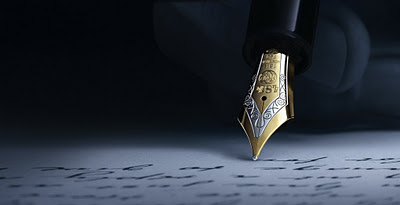Advertising Series #5: The Image - Imaginary Figures - The Marlboro Man
Using the imaginary figures, such as cartoon or fictional characters, animals, or babies to display a product will bring a better results. Claude Hopkins, a great advertising pioneer who declared advertising should only exist to sell something and advertising should be measured and justified in term of outcoming results, said if you could make your characters popular, you could sell the products that your characters interact with. Nobody liked any organization or corporation, but people liked a human and a character and they would want to know all achievements or creation about that human or character.
Those characters are so effective. In a survey conducted in 1985, 93% shopping woman can remember Mr. Clean who can help them clean all kinds of dirt and grease in the kitchen sparklingly; meanwhile, only 56% of them can identify Vice President George Bush (Bush Father).
I would like to introduce below 10 most famous iconic Fictional Advertising Characters of US and personally, I feel not only those characters has created a role of US consumerism, but also their images have created many influence over the globe about the image of US country, (It is kind of increasing perceived value of US). Here is the quotation I got from an article called Ad Age Advertising Century: Top 10 Icons:
Source: http://adage.com/article/special-report-the-advertising-century/ad-age-advertising-century-top-10-icons/140157/
(Bonus: Another great source for whoever love advertising is http://adage.com/ this is well-renowned magazines for people who MAKE ad and LOVE ad).
I will try my best to find and review lessons that we can learn about this top 10 characters in term of creation history, the problem of selling they solved or the creation of imagination they created, the delivered result, the evolution of the image through times, and some interesting facts or videos
1. The Malboro Man
Those characters are so effective. In a survey conducted in 1985, 93% shopping woman can remember Mr. Clean who can help them clean all kinds of dirt and grease in the kitchen sparklingly; meanwhile, only 56% of them can identify Vice President George Bush (Bush Father).
I would like to introduce below 10 most famous iconic Fictional Advertising Characters of US and personally, I feel not only those characters has created a role of US consumerism, but also their images have created many influence over the globe about the image of US country, (It is kind of increasing perceived value of US). Here is the quotation I got from an article called Ad Age Advertising Century: Top 10 Icons:
"Advertising Age's list of the Top 10 ad icons of the 20th century recognizes those images that have had the most powerful resonance in the marketplace. The criteria include effectiveness, longevity, recognizability and cultural impact.
- The Marlboro Man - Marlboro cigarettes
- Ronald McDonald - restaurants
- The Green Giant - Green Giant vegetables
- Betty Crocker - Betty Crocker food products
- The Energizer Bunny - Eveready Energizer batteries
- The Pillsbury Doughboy - Assorted Pillsbury foods
- Aunt Jemima - Aunt Jemima pancake mixes and syrup
- The Michelin Man - Michelin tires
- Tony the Tiger - 's Sugar Frosted Flakes
- Elsie - Borden dairy products"
Source: http://adage.com/article/special-report-the-advertising-century/ad-age-advertising-century-top-10-icons/140157/
(Bonus: Another great source for whoever love advertising is http://adage.com/ this is well-renowned magazines for people who MAKE ad and LOVE ad).
I will try my best to find and review lessons that we can learn about this top 10 characters in term of creation history, the problem of selling they solved or the creation of imagination they created, the delivered result, the evolution of the image through times, and some interesting facts or videos
1. The Malboro Man
- History: Date introduced: 1955. Creator: Leo Burnett Co.
- The problem of selling they solved: The Marlboroman was created in the 1950s to reposition Marlboro from a niche market or a feminine image (lady cigarette) to a bigger market or a masculine (all US market). They reentered the marke with a slogan "delivers the goods on flavor"
- The delivered result: Sales was going to the moon, $5 billions, a 3,241% increased compared to 1954 . According to Adage, this brand's US share was less than 1%. Unbelievable! Once again, this is a lesson about the Perceived Value of a product. Many people are selling the same product, but who are the best sale man? The best sale man is the one creating the most Perceived Value where other sale men cannot compete with him. The only thing they can compete is becoming a commodity: lowering the price. In brief, I see a lesson from here are:
Perceived Values are those pains in the mind of the customer. Those are their unsatisfied dreams, their desires, and their imagination.
Real Values are those pains in resolving a problems. Those are tasks or tangible results that customers have.
- The evolution of the image
- 1957
- 1955 - 1962
- 1996
- 2004
- Couple interesting videos about The Marlboroman Man TV ads (when the times they still allowed it)
- Interesting facts:
- Darrell H. Winfield was a rancher and a model for the image The Marlboro Man.
- Leo Burnette claimed the reason choosing Darrel, "I had seen many comboys, but I have never seen one that just really, like, sort of scared the hell out of me."
- He had a great career as a model for Philip Morris for 20 years. After his retirement, the company spend $300 million to find a new Marloborman.










Comments
Post a Comment